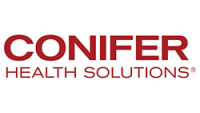An enhanced patient experience requires technology with a personal touch
Most healthcare executives see the growing shift to consumerism and recognize that their organizations — and the industry as a whole — are continuously challenged to meet rising patient expectations around service and access.
According to 2021 Healthcare CEO Future Pulse from KPMG Global, 67% of surveyed executives believed the healthcare industry must prepare for the same elevated levels of service, quality and accessibility consumers expect in other areas of their day-to-day interactions. In addition, 61% of executives felt that healthcare lagged behind other consumer-oriented industries.
The vast majority, 79%, felt their organization’s patient experience “needed improvement,” and some are beginning to make progress. While only 29% indicated that a patient-centric concept is “on the agenda,” 44% have included the topic in their strategic plans.
A positive patient experience begins before the patient steps foot in a facility, followed by an efficient and accurate process every step of the way. Errors on the front-end cause unnecessary back-end work, leading to revenue shortfalls, increased costs and frustrated patients.
Six steps can help providers make significant headway by blending technology-enabled solutions with personal service to enhance the patient experience and avoid downstream revenue cycle issues.
1. Upgrade technology
Technology and systems should drive efficiency, not create complications. As a result, providers should consider whether or not to retire existing systems, which are often a patchwork of bolt- on applications that slow registration and financial clearance.
“Consolidation of key applications can bring a consistent, streamlined experience for both the registration team and the patient,” said Terry Russell, Conifer vice president of implementation and optimization. “Team members also should have clear visibility into work effort required, so that they can be wise in their use of the patient’s time.”
Deploying a single, integrated front-end solution streamlines processes and automates workflow — and ultimately gets patients registered in a few minutes with a few clicks. By simplifying pre-registration and arrival tasks for scheduled appointments, staff members can more effectively handle non-scheduled events and complete those processes in less time.
With any technology selection, it’s important to evaluate the total cost of ownership, ease of adoption by staff members, and the ability to integrate into other systems and processes to help decrease the workload and increase the focus on patient care.
2. Automate workflow
Manual data entry is an inefficient task that tries the tolerance of patients and carries a huge cost. Strive to automate 60% or more of manual work efforts to reduce registration-related errors and improve the accuracy of cost estimation (both insurance and patient portions). Determine the most appropriate time and manner in which to request payments from patients and use this information to standardize critical steps in the registration process.
“It’s critical to understand the flow of information as well as the maturity of data and when you need it,” said Russell. “A concise understanding of business requirements upfront prioritizes the patient experience and improves their satisfaction.”
3. Invest In training and development
Maximizing investment in more efficient, automated technology requires ongoing training and development as well. Staff members who are comfortable and confident with the technology will be more efficient and will interact with patients in more positive ways.
“Our team members are critical to our client’s success,” said Romina White, Conifer vice president of patient services. “Ensuring their success through a rigorous process and training program upon hire improves their overall satisfaction and translates well to the patient.”
To ensure new staff members get up to speed quickly, document and illustrate the processes impacted by new technology and consider change management initiatives. Ongoing development also allows for continuous improvement of technology and processes, driven by listening to feedback from patient access staff. Team members are one of the best sources for new ideas as they deal directly with the patient population.
4. Integrate operations
Prepare for patients by beginning registration tasks for scheduled appointments at least three days before patient arrival. Set a goal to complete 95% of registrations for scheduled appointments before arrival. This will reduce last-minute setbacks for both patients and physicians.
“We must be prepared, communicate effectively and exceed our patient’s expectations,” White said. “Planning ahead using the best in integration applications provides the best foundation for a positive patient experience.”
Seamless integration leads to efficiency. Look for ways to centralize functions related to patient access. Call centers can be centralized to complete the pre-registration of scheduled appointments more effectively. Providers can also leverage the same interface across centralized operations and on-site staff to encourage a seamless handoff and create greater transparency around remaining tasks.
5. Estimate liability
Hospitals and patients are united on this point: They do not like to be surprised by the cost of care. With the No Surprises Act, providers must go beyond verifying eligibility and benefits, and generate sound liability estimations in tight time frames. Combined with processes to support accuracy of estimates, patient payment portals, and readily available payment plan and financing options, the avoidance of surprises greatly improves collections and reduces the effort on accounts receivable while providing more transparency for patients.
6. Improve visibility with real-time analytics
Continuous improvement of the patient registration process requires that staff have ready access to holistic real-time information about the patient’s medical history and their current status throughout the registration process. Integrated systems with dashboard views offer clear visibility into registration tasks, future appointments and productivity levels, which will help the teams prioritize work and make patient access activities more efficient. Real-time analytics can also enable effective performance management programs to evaluate and measure individual performance and optimize productivity.
Improving the patient experience is a journey. By taking a focused, systematic approach, providers can make measurable progress toward happier patients, more productive staff, and more engaged and satisfied physicians, ultimately resulting in improved financial performance.






